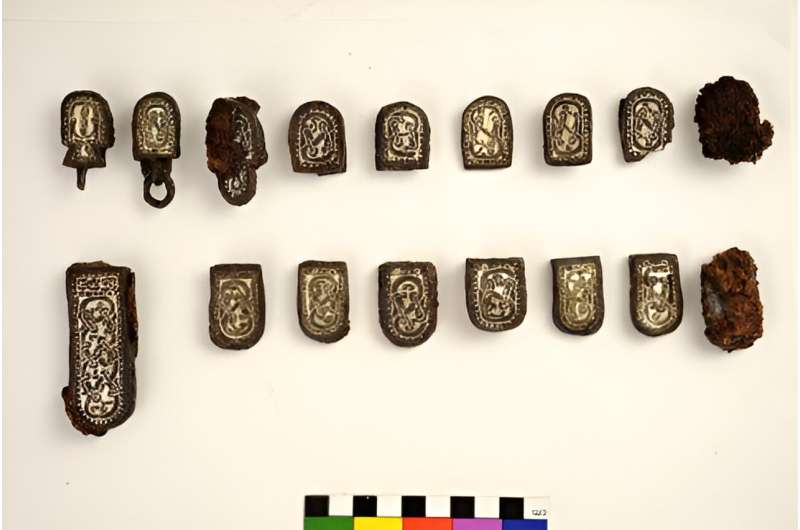This article has been reviewed according to Science X's editorial process and policies. Editors have highlighted the following attributes while ensuring the content's credibility:
fact-checked
peer-reviewed publication
trusted source
proofread
Ancient DNA sheds light on the genetic diversity of post-Roman elites

A new study of ancient DNA by a team of international researchers and co-led by Krishna R. Veeramah, Ph.D., of Stony Brook University, provides insight into the development and social structures of European rural communities following the fall of the Roman Empire.
The findings, published in a paper in the Proceedings of the National Academy of Sciences (PNAS), suggest that early medieval elites, or those of higher social status, were initially made up of multiple families with distinct genetic ancestries. However, over time, these families intermarried and also the local communities integrated genetically diverse newcomers from a variety of different social and cultural backgrounds.
The research team combined paleogenomic, archaeological, and isotopic data to shed light on the community that used a cemetery in Collegno, Italy, as a burial site during the 6th to 8th centuries CE. Researchers sequenced and analyzed the genomes of 28 individuals from the cemetery and incorporated data from 24 previously published genomes. They also studied individuals' patterns of social mobility, burial patterns, and diet.
"When the Roman Empire collapsed, we did not really know much about how new communities formed, yet many of these communities would go on to be the basis for modern European countries," explains Veeramah, an Associate Professor in the Department of Ecology & Evolution in the College of Arts and Sciences, and Director of The Veeramah Lab, which is dedicated the study of evolutionary genomics.
"Our study reveals that these elites were genetically surprisingly diverse, and in the process of creating new European communities in the medieval era, families with diverse genetic ancestry would come together to form ruling groups."
"In 2018, our team published a paper that demonstrated genomic and cultural similarities between Collegno and Szólád, a village in modern Hungary that showed a significant correspondence between individuals with a northern European ancestry in both," adds Patrick Geary, Ph.D., of the Institute for Advanced Study.
"Our new study follows the transformation of this Italian community over a century, and shows how new groups moved into and merged with the existing inhabitants."
The researchers discovered that the Collegno community was initially established by and organized around a network of closely related individuals, likely from several elite families. But over time, they evolved into a single extended lineage spanning at least five generations.
Veeramah and colleagues believe individuals from this lineage had a higher ranking in society based on their richer diets and heavily detailed, and likely more expensively made items they were buried with, such as weapons and elaborate belts [see attached photos].
The findings also show that while the Collegno community was initially established by these elite families, a majority that came from northern Europe, the community later incorporated individuals from other origins and genetic backgrounds into it, including surrounding locals.
More information: Yijie Tian et al, The role of emerging elites in the formation and development of communities after the fall of the Roman Empire, Proceedings of the National Academy of Sciences (2024). DOI: 10.1073/pnas.2317868121
Journal information: Proceedings of the National Academy of Sciences
Provided by Stony Brook University





















